A requiem for NC’s Tobacco Road as it loses stature in a changing college sports world
The earliest traces of Tobacco Road, in the literal sense, are still visible on several acres of old farmland in Durham, where the scent of tobacco leaves still lingers in an aging factory on the Duke Homestead. This is where it all began in the years after the Civil War, where Washington Duke started an empire that built North Carolina, for better or worse.
The land gave rise to an industry and also, in time, to a phrase that became synonymous with a region and another one of its most treasured exports: college basketball. Tobacco Road, now and for a long time, conjures more of an association with basketball than it does anything else. It’s the mythological thoroughfare of a state’s favorite pastime, the Main Street of the ACC and, therefore, a road in peril in a time of change.
While tobacco, itself, fueled North Carolina’s economy for more than a century, Tobacco Road facilitated the state’s deep love affair with a sport that became a defining part of its culture. Around here, in the Triangle and beyond, that version of Tobacco Road isn’t limited to a specific place. It is, instead, nowhere and everywhere — winding past crumbling barns in the country and around the strip malls and subdivisions surrounding I-40, into college towns and campuses and finally to old gyms and newer arenas; the main attractions.
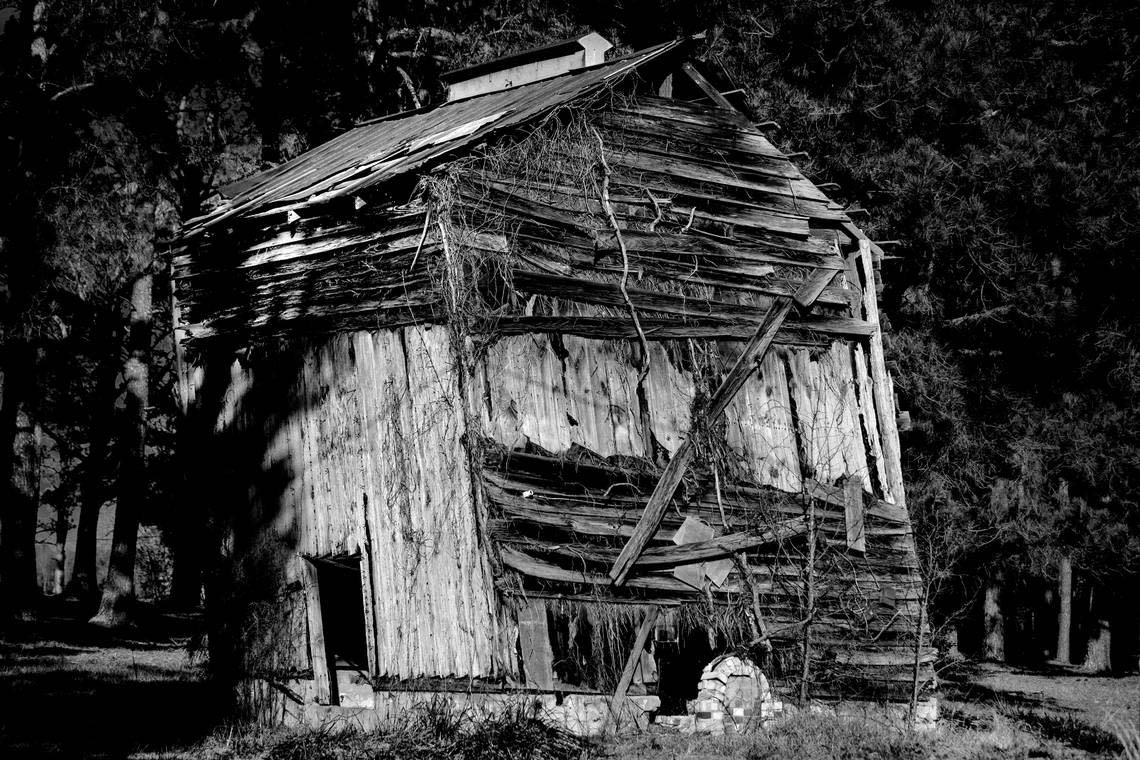
Tobacco Road encapsulates the Duke-North Carolina rivalry and the deeper connection among the Big Four that includes those two schools and N.C. State and Wake Forest. It’s Reynolds Coliseum, named after a tobacco magnate, in a smoky haze during the earliest ACC tournaments. It’s Everett Case, who built Tobacco Road, and it’s Dean Smith and Mike Krzyzewski, who bolstered its prestige and maintained it. It’s the All-Americans who’ve called it home, the games that gave it mystique, the fans who traveled it like pilgrims and then as stewards.
There’s no place like it, in all of college athletics or American sports. And now, not unlike the crop that inspired its name, Tobacco Road finds itself in something of a decline, unable in the present to compete with its past; its future less promising than its history suggests. A version of Tobacco Road will always exist, just as sure as vestiges of long abandoned tobacco barns remain alongside country roads. And yet its place and influence continue to fade in a changing world.
The Duke Homestead and tobacco in NC
There’s no better place to understand the origins of tobacco’s hold over North Carolina — and, in an indirect way, how Tobacco Road came to be — than the Duke Homestead, which sits three miles north of the university that bears his name. Duke’s old farmhouse is there, looming over a barn and his earliest factories. A small tobacco field is a little closer to the museum that’s a short walk away.
Inside, exhibits bring alive the history — old cigarette-making machines and classic advertisements for Bull Durham Smoking Tobacco; photographs from the fields and the markets, homages to what tobacco gave and acknowledgment of what it took. A bulletin board near one of the exits invites visitors to share, blank Post-it notes offering prompts: “What is your tobacco story? What is your tobacco memory?”
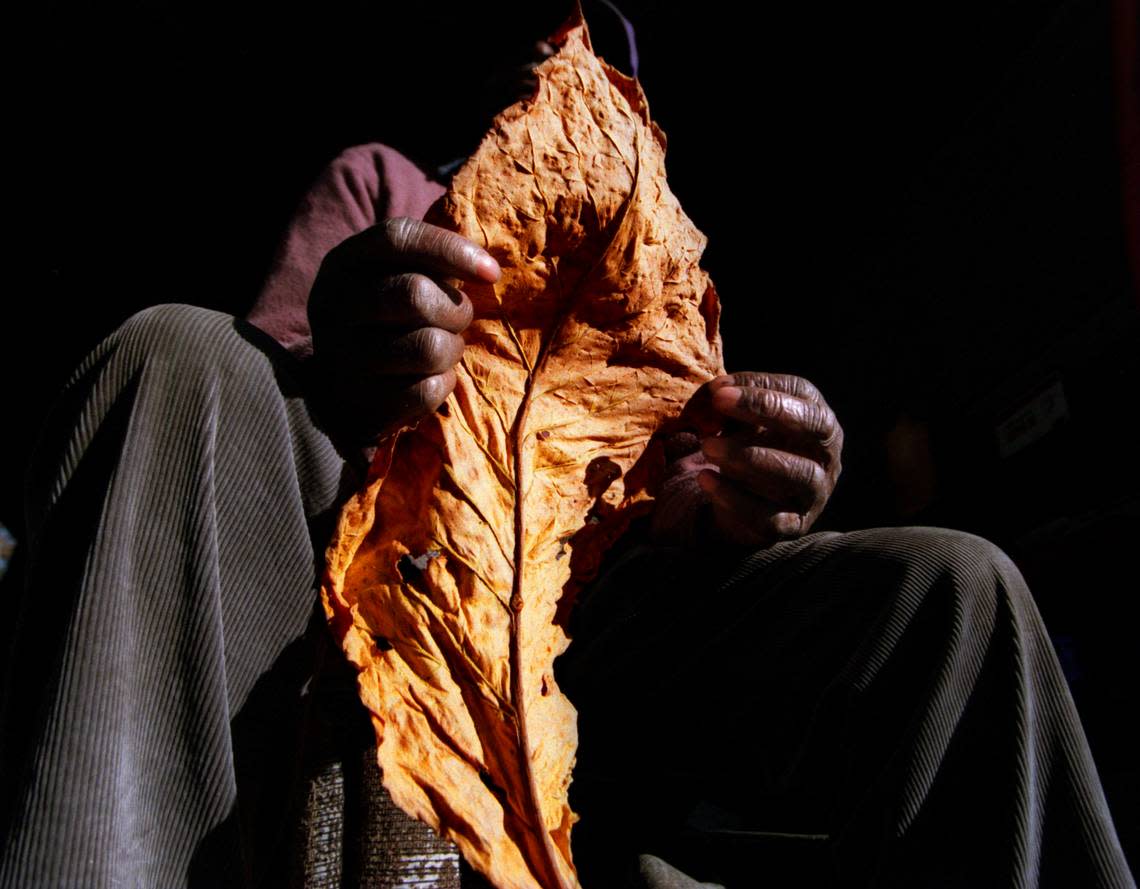
“Smoked too much and got sick,” someone wrote. Another told of how the smell of cigarettes rekindled the memory of their father, who’d smoked Lucky Strikes and died young. The words “nostalgic” and “sad” were underlined twice on another Post-it. “I grew up barning tobacco. It put food on the table, clothes on our backs, paid for my college,” the person wrote. And then: “Both parents died from lung cancer.”
At the bottom they wrote the words again: “Nostalgic yet sad.”
It fits college sports nowadays, too, in a time of eroding tradition and upheaval. Tobacco Road isn’t immune. In a way, it’s a case study. Its bonds will either prove strong enough to endure or they’ll become another part of this state’s past, ruins on the proverbial roadside.
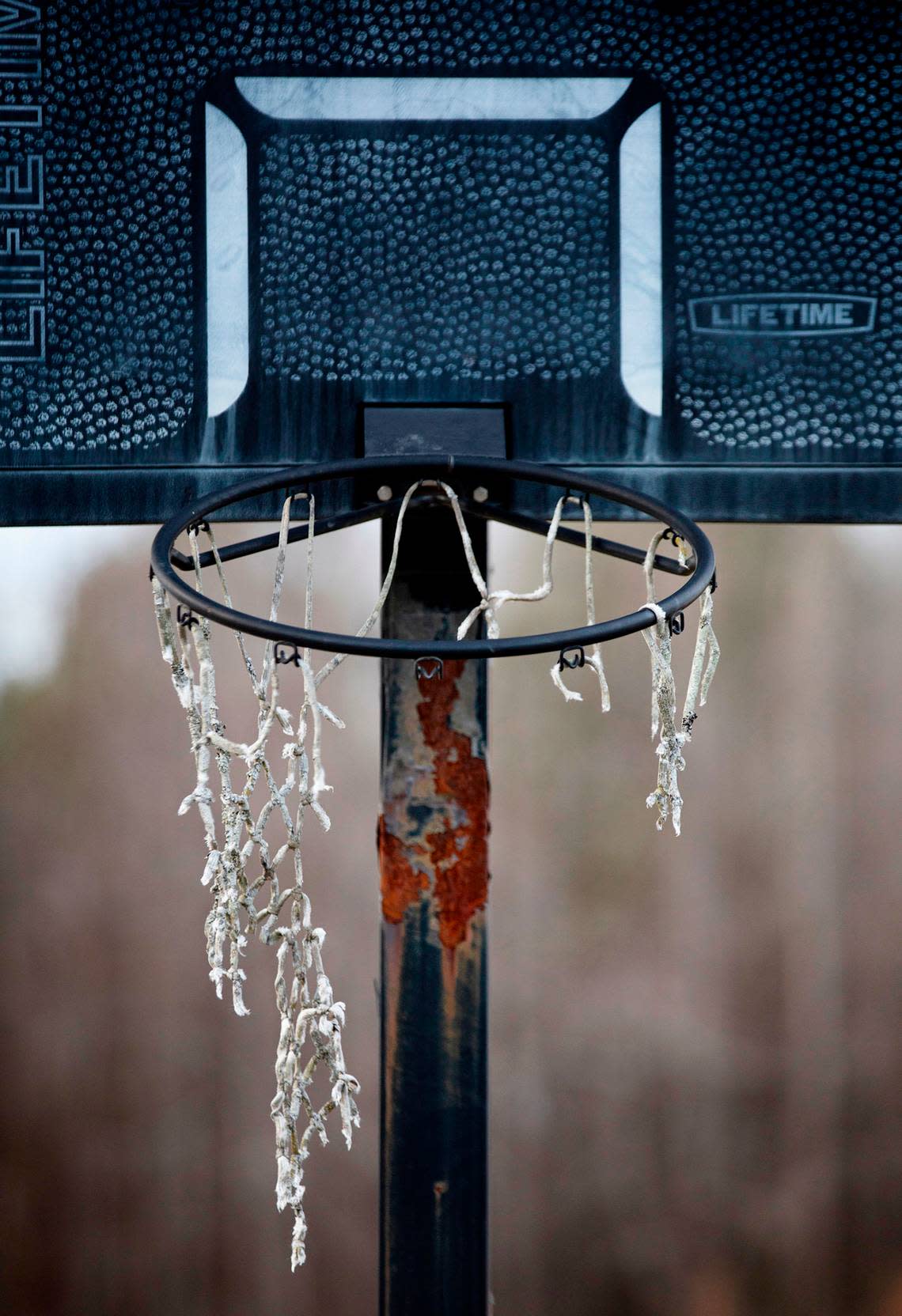
January brought hope on Tobacco Road
There has always been a symmetry along Tobacco Road, the mythical at its busiest with the literal at its slowest, the land at rest. Every January the road offers opportunity — its inhabitants trying to assert themselves at the start of conference play and their supporters taking stock of what’s possible.
This year inspired a rare kind of hope. Around mid-January, UNC, Duke, State and Wake Forest were all atop the ACC, with the Tar Heels in front but their rivals not far back. It was a throwback to Tobacco Road’s earliest days, which predate the ACC’s founding in 1953, and reminiscent of a time that gave this place an identity.
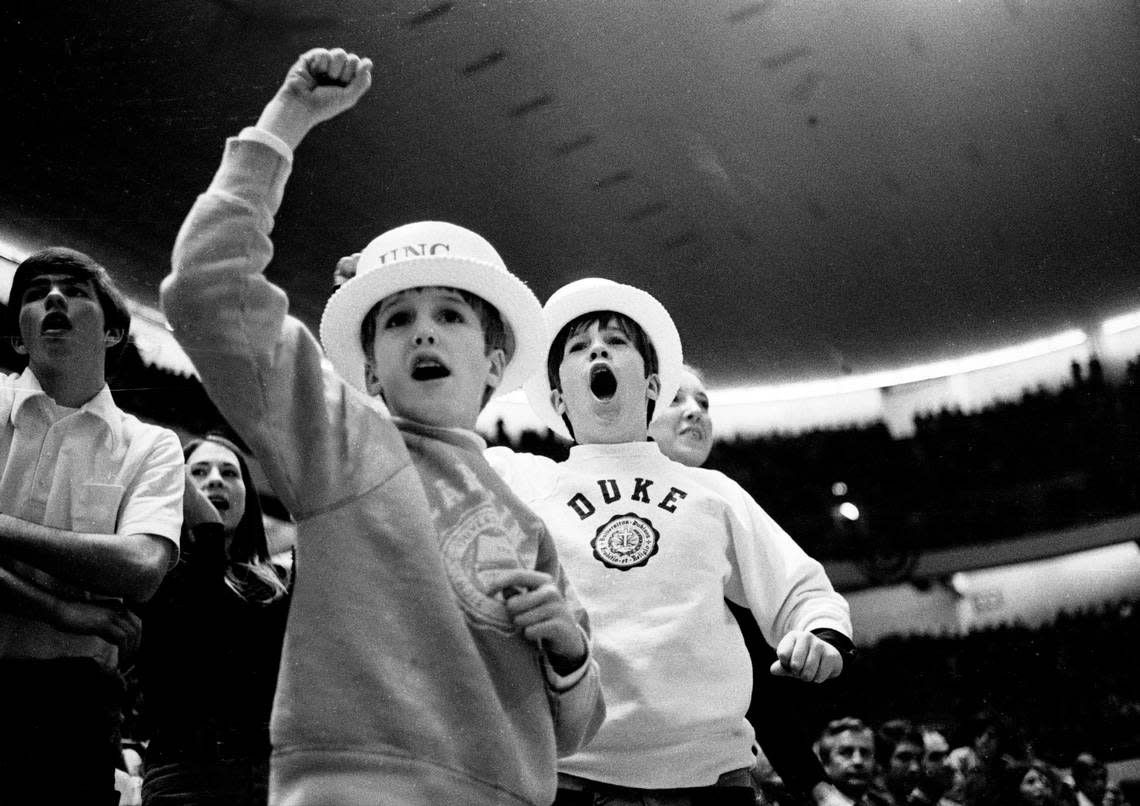
And yet it was much different, with teams built on rosters that constantly turn over, for one, and with the perception that the ACC has fought for the past several seasons — that it’s a shadow of itself. College basketball’s place has changed, too, from a statewide sensation to another option, in sports or otherwise, vying for attention.
Still, there are those fleeting moments when Tobacco Road still commands attention. One of those stretches began Jan. 10, starting with the 245th game between UNC and N.C. State, this one in Raleigh, and ending with the 255th between State and Wake Forest, also at PNC Arena. In-between, on a cold Saturday, UNC and Duke played home games a few hours apart.
As always, there was an energy in Raleigh for State-Carolina, the home fans subjecting themselves to a familiar ritual of pride and pain amid another UNC victory. Six days later brought State relief in an escape against Wake that came with some classic Tobacco Road escapades: the ejection of State coach Kevin Keatts, double technical fouls in the final minute and the two-fingered salute State’s DJ Horne offered an unaware official, the moment going viral online.
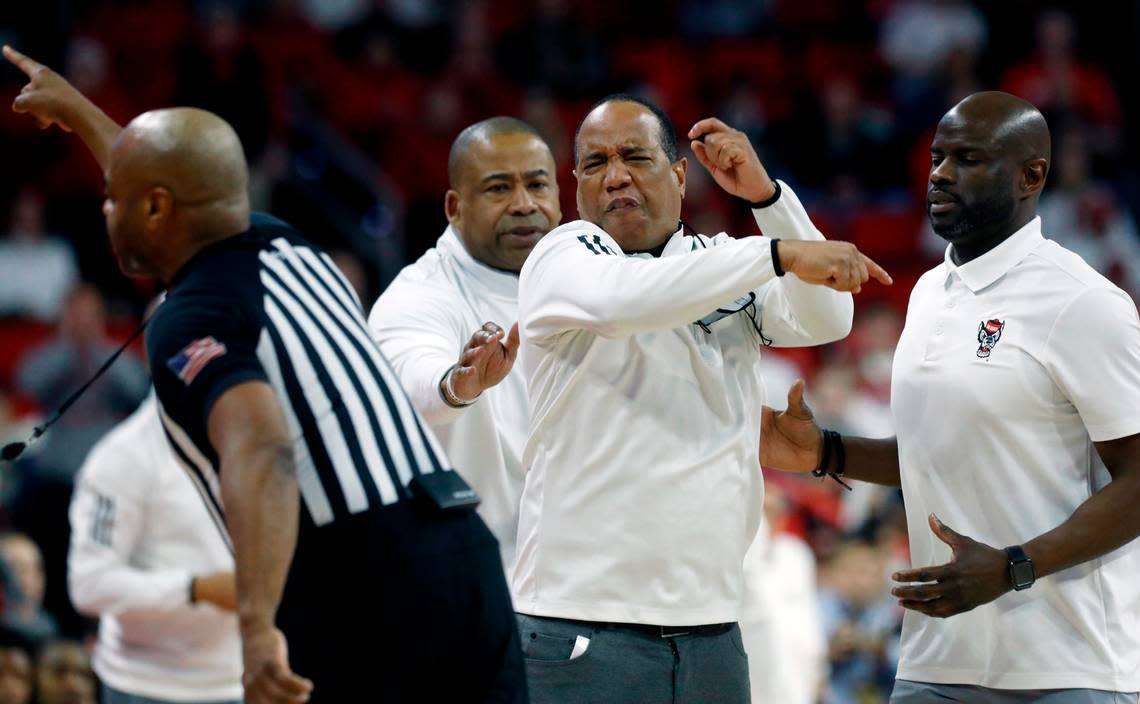
A Saturday afternoon in the heart of the ACC
The Saturday in-between, though, was the star. In the early afternoon, UNC looked like a national championship team during a rout of Syracuse. Later, Duke persevered against Georgia Tech. Jon Scheyer, Duke’s second-year head coach, walked into work early that morning after a restless night, and he’d been struck by the students camping out and then by their noise and energy when his team needed an emotional lift.
“I thought it was as loud as could be in there,” he said later. “And Saturday afternoons in Cameron — for me those are some of the most special games that you can play in; that you can coach in.”
Indeed, few atmospheres in college basketball can rival a Saturday afternoon at Duke. And perhaps nothing can compete with the double-header — pair of ACC games in Chapel Hill and Durham, back-to-back.

But now Saturdays like that could be numbered, with the ACC’s future in doubt. Florida State is suing to get out of the conference. College basketball, which allowed the ACC to become the nation’s wealthiest league in the 1990s, isn’t nearly as valuable a commodity as it was. The pursuit of football television revenue threatens to tear apart the conference.
It’s not out of the realm that UNC, Duke, State and Wake all wind up in different leagues. It’s not out of the realm that what they built, together, can’t withstand what’s pulling them apart.
If there’s a literal embodiment of Tobacco Road, it’s probably the stretch of 15-501 connecting Chapel Hill and Durham. After UNC’s victory against Syracuse, it took 22 minutes to drive from the Smith Center parking lot to the garage near Cameron Indoor Stadium.
Brake lights and stoplights clogged the ride. The midpoint between two of the sport’s cathedrals — in a Home Depot parking lot — passed by amid a maze of strip malls. There was no farmland in sight but Tobacco Road had proved resilient to attempts to pave it over.
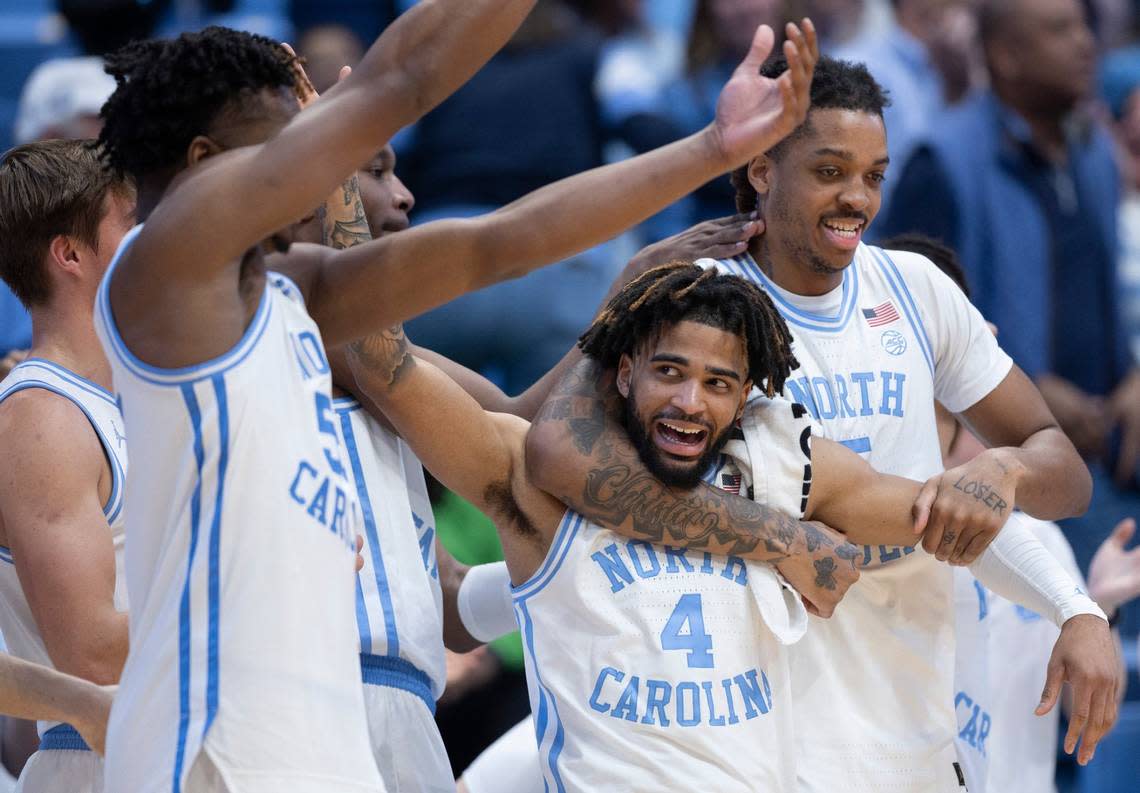
‘Tobacco Road is bumpy’
“Tobacco Road” was a popular yet controversial stage play, once, and before that it was a book. Without them, then maybe Tobacco Road never becomes a part of North Carolina’s vocabulary in the first place. Erskine Caldwell’s “Tobacco Road” was published in 1932, a novel about Georgia sharecroppers set in the Great Depression.
A work of dark comedy and social criticism, it became a play of the same name a year later. In its time it became Broadway’s longest-running show, and some cities banned the touring version from coming to town. Raleigh was among them, with its mayor in 1939 describing “Tobacco Road” as “a mass of ‘profanity and sex,’” according to a story in the Durham Sun.
It was around then when North Carolina sportswriters began co-opting the phrase, and its poetic simplicity, and created a mythical byway connecting UNC, Duke, Wake Forest and State. At the time, Wake Forest still resided in the town of the same name, before tobacco money spurred its move to Winston-Salem in 1956. “Tobacco Road,” as it related to sports and the Big Four, began appearing in state newspapers in the mid-to-late 1930s and early ’40s, and gradually it stuck.
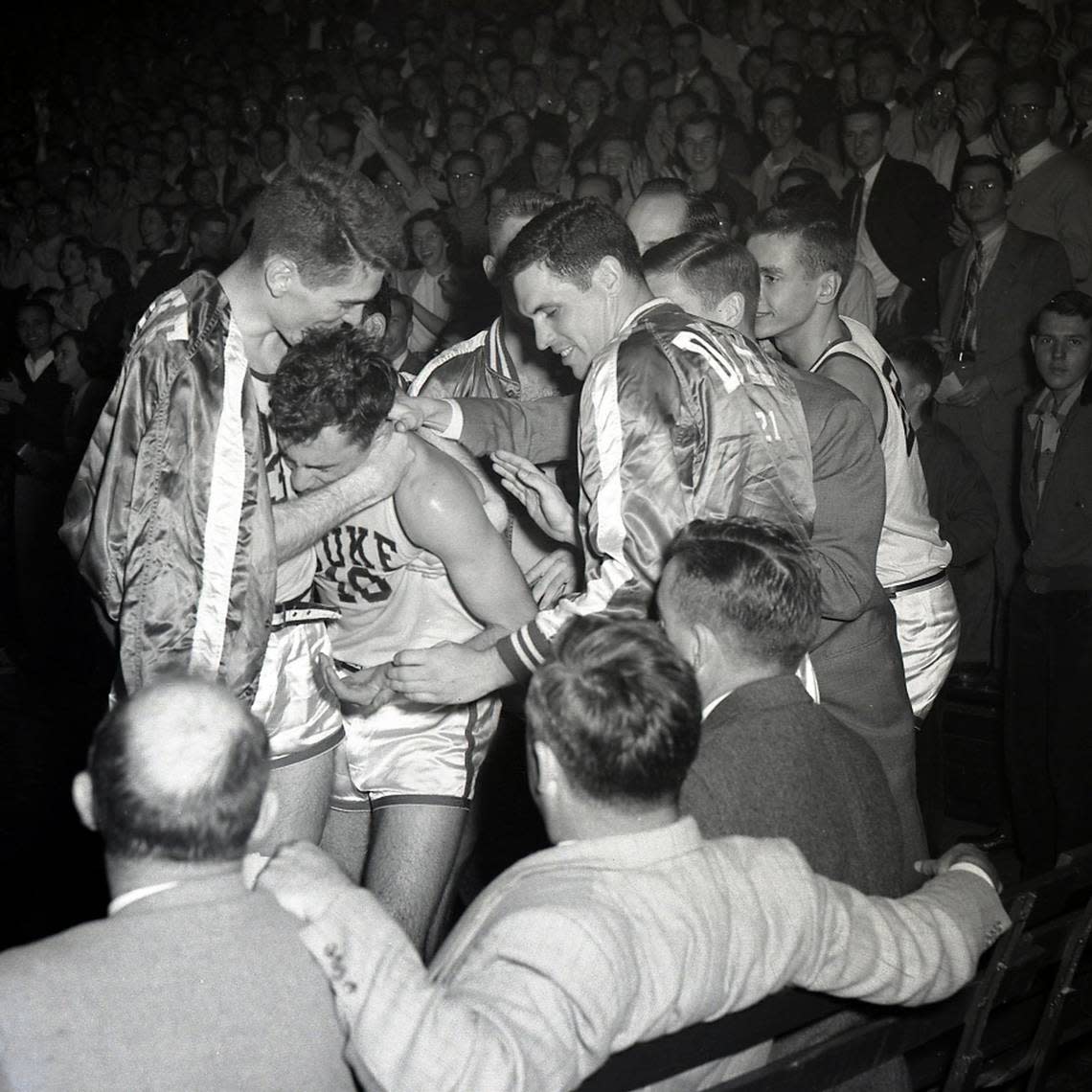
“Tobacco Road is bumpy,” went a 1936 story in the Durham Sun, about local college football. A 1942 story in The News & Observer included quotes around the phrase, as if the writer wasn’t quite sure about this new-fangled slang: “In Southern conference basketball lingo, ‘Tobacco Road’ is composed of Duke, North Carolina, Wake Forest, and N.C. State.
“Many a high-riding team has come a cropper by meeting the four schools on this circuit.”
By then, Tobacco Road was going mainstream, the phrase eliciting a sense of pride, in North Carolina, and contempt outside state lines. Before the start of the 1949-50 college basketball season, Mac Pitt, the coach at Richmond, lamented his Southern Conference travels: “I don’t get such a kick of coming to Tobacco Road,” he told a group of reporters, decades before Maryland’s Gary Williams offered quips that he and the Terrapins might as well have been in Alaska.
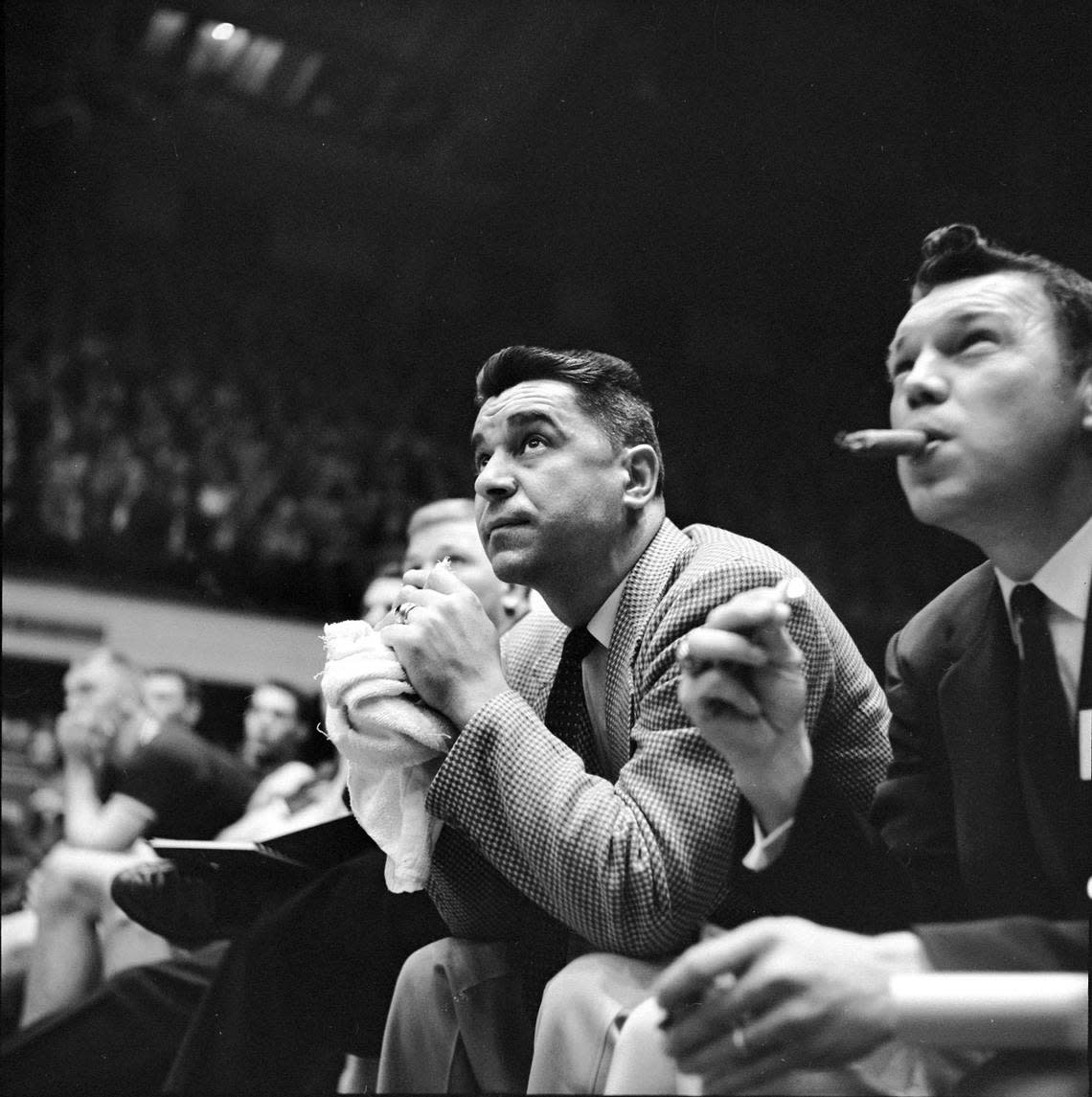
At a luncheon before the 1956 ACC tournament in Raleigh, Frank Howard, the Clemson football coach, spoke for the non-North Carolina contingent of the league: “I hope Clemson or South Carolina or Maryland can win this tournament because I’m damned tired of these Tobacco Road teams hogging all the glory.” N.C. State won it, again. (Clemson still never has; South Carolina’s first and only ACC tournament championship — both for the state and the school — came in 1971, before the Gamecocks left the conference.)
The tobacco crop isn’t what it once was
The rise of Tobacco Road coincided with the peak of the tobacco industry during the 20th century. In the moment it might’ve seemed like its reign might last forever. In 1964, when the U.S. Surgeon General first warned of the danger of smoking, there were nearly 88,000 tobacco farms in North Carolina, according to Matthew Vann, an N.C. State associate professor and a tobacco researcher.
Almost 3,100 of those farms were in Durham, Orange and Wake counties, Vann said, citing the U.S. Agricultural Census. By the 2017 census, those three counties were home to 54 tobacco farms. There were four left in Durham County, and Vann said in a recent interview that he expected the number to be zero when the 2022 census numbers become available.
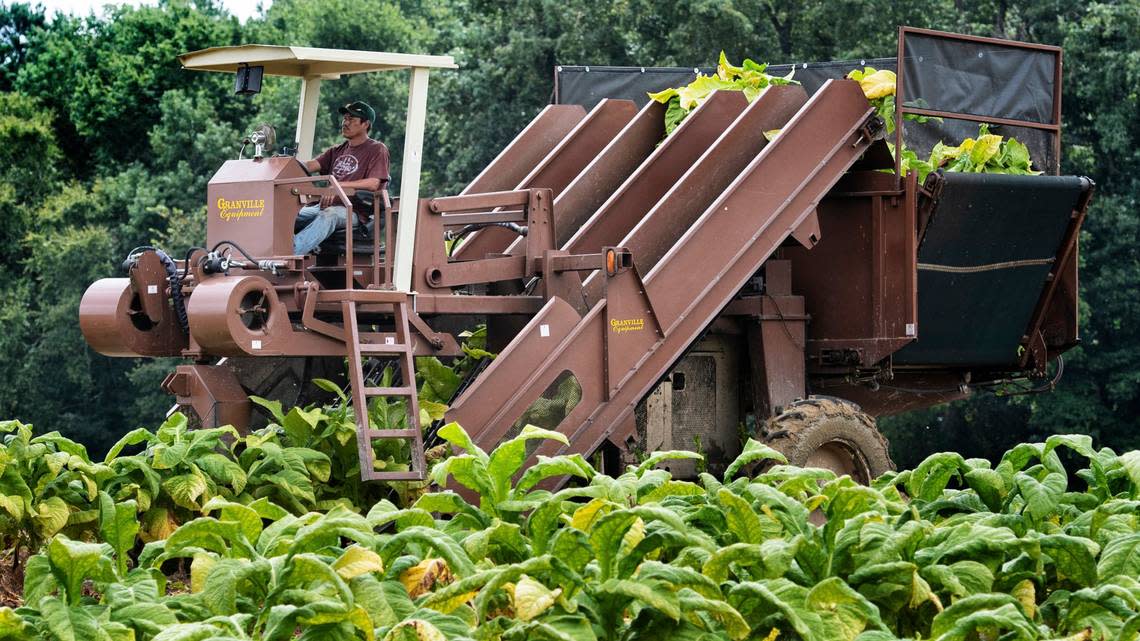
North Carolina is still the nation’s leading producer of tobacco. It’s still among the state’s most valuable crops, with a revenue in 2022 of $524.3 million. It is not, though, the force it was. Over the past 50 years, North Carolina tobacco farms have declined in number by about 98%. There’s not exactly a sadness about it. Stigma is company to whatever pride remains.
Still, the story of North Carolina can’t be told without the story of tobacco’s rise and relative fall. If there were a real, actual Tobacco Road, Vann said, it’d probably be U.S. 70 into the eastern part of the state, where trucks used to carry the harvest back west toward the warehouses in Durham. Or maybe it was 301, around Wilson.
Drive around either road now and familiar scenes repeat, especially throughout the eastern part of the state. Ghosts of North Carolina’s past hang on, tobacco barns fading away like a curl of smoke. Every now and then there’s an old basketball hoop nearby, crooked on the side of an abandoned building or standing alone, North Carolina worlds colliding.
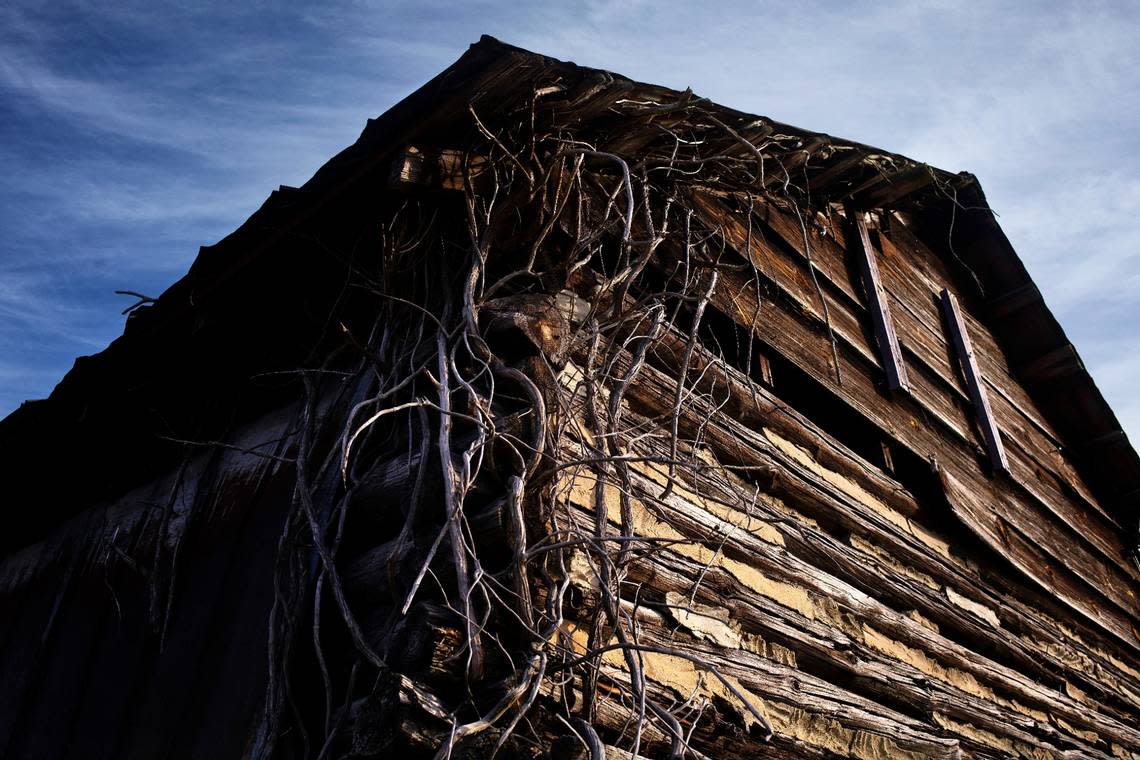
UNC, Duke, NC State and Tobacco Road prominence
Tobacco Road, as it’s known today, has outlived its roots. The literal has all but died. The figurative endures, though it, too, is at risk in an evolving state of college athletics.
UNC and Duke’s Saturday game, in Chapel Hill, is the 261st. No other Big Four pairing has happened more often. It’s college basketball’s best rivalry, one that has produced 49 games with both teams ranked among the top 10, according to ESPN researcher Bryan Ives. No other rivalry comes close, though second place also resides on Tobacco Road. It’s UNC-N.C. State, with 14 such games.
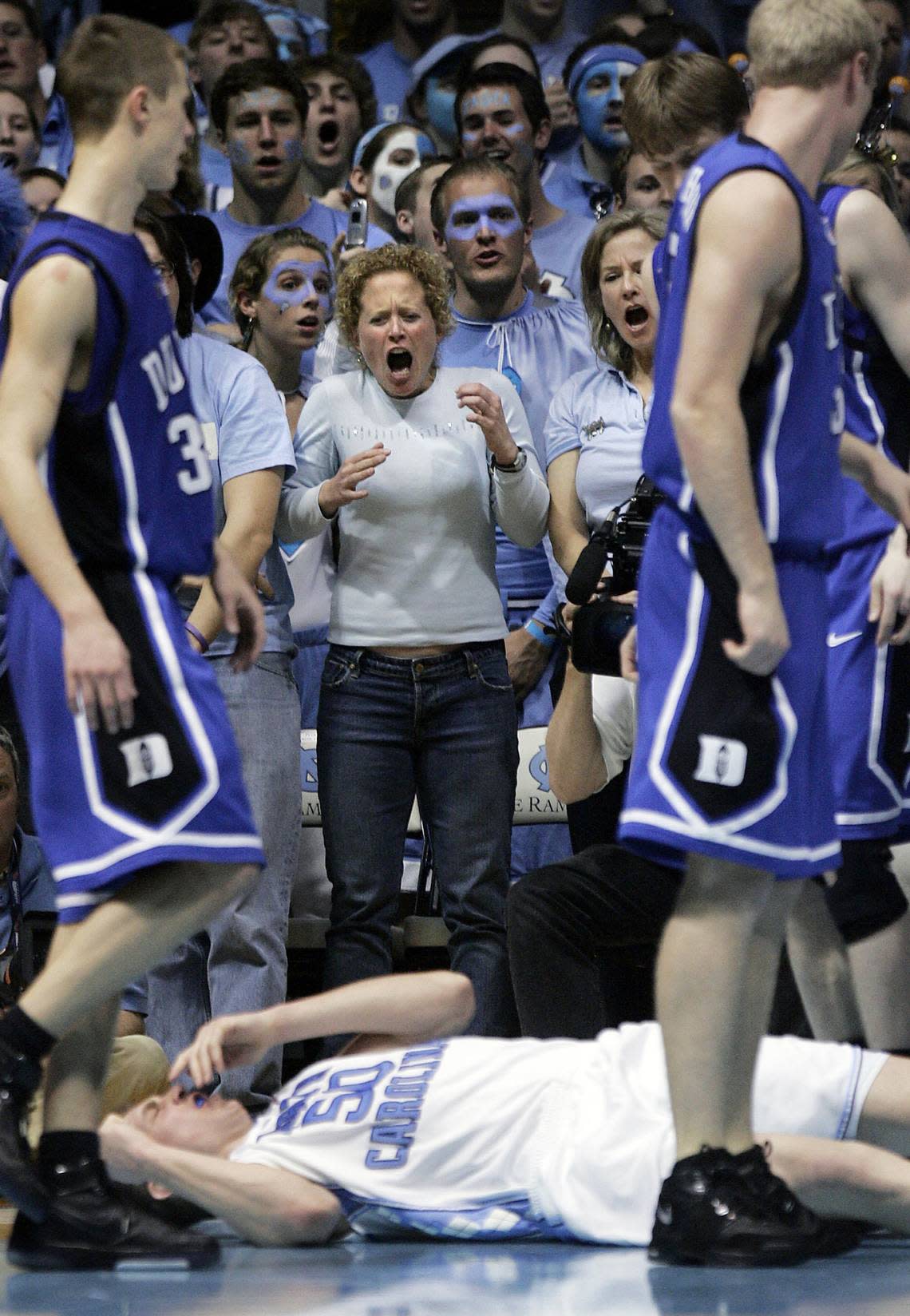
Those two series, especially, gave Tobacco Road prominence, and made it perhaps the most unique place in college athletics. All together, the members of the Big Four have played each other 1,507 times. Their ties to each other, in basketball, at least, all go back more than 100 years. There’s no reason to suggest they won’t continue to play each other for a long time to come.
But will it be as often? Will they all be conference games?
The All Coast Conference dawns
Next year, the ACC might as well come to stand for All Coast Conference. Its westward expansion will take effect, with the arrival of California and Stanford and SMU. If Tobacco Road once offered a tidy midpoint in a geographically-condensed league, what will that midpoint be now? Somewhere in Oklahoma off of I-40?
The conference had to expand, the proponents of the decision say, to keep up with the Big Ten and SEC and Big 12; to ensure the ACC doesn’t become the next Pac-12, which has been scavenged into obsolescence. The Power Five will soon be down to the Power Four, and given the financial disparity among conferences it’s already a Power Two, with schools and leagues chasing the money.
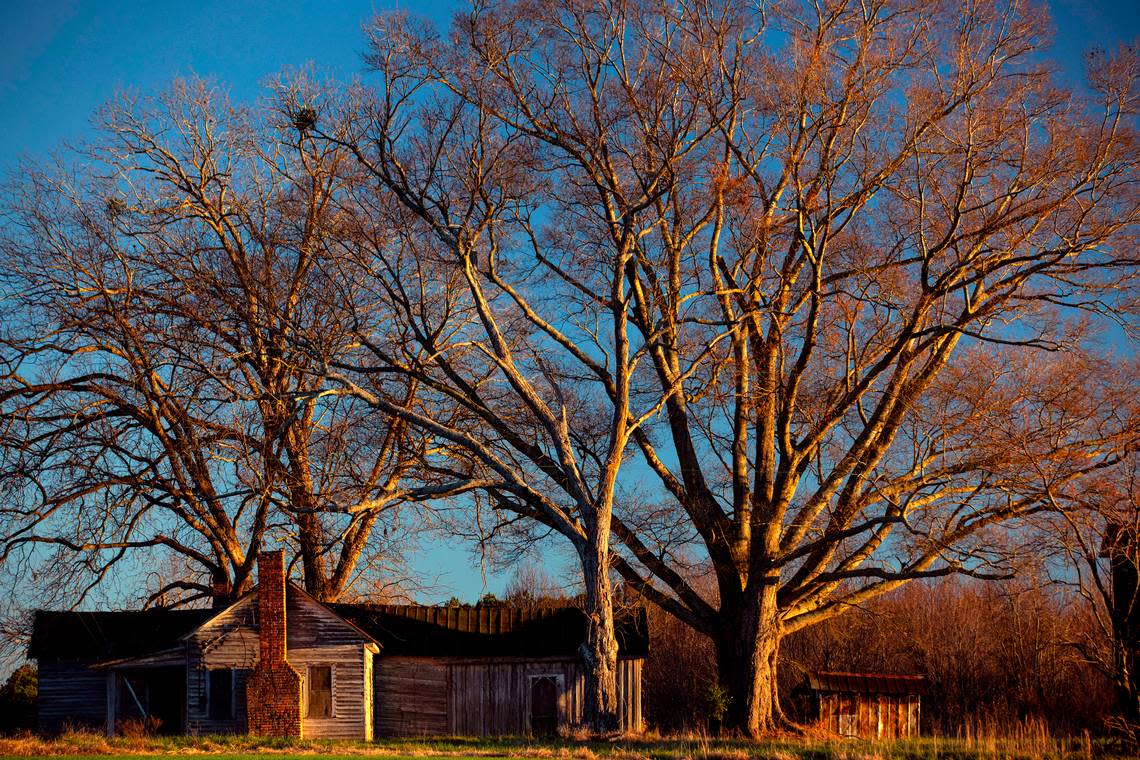
The ACC certainly isn’t immune from that chase. One could argue its cannibalization of the Big East, which continued from the early 2000s and into the 2010s, set a lot of these moves into motion. There are no sacred bonds in college athletics anymore, no safe places, not even Tobacco Road, which in its best days gave rise to an entire sport.
In these less certain days, Tobacco Road continues to hang on. It’s the ninth and by far the most well known of North Carolina’s Tobacco Roads. The other eight are real, actual ones, all of them smaller and two lanes in rural parts of the state. There’s a Tobacco Road in Craven County, one in Randolph and others in Granville, Chatham, Iredell and Robeson counties.
There’s one in Rockingham County that dead ends into a field, old barns still standing amid a picturesque countryside, a pretty view in the distance of the rolling and rising Piedmont. Some of these Tobacco Roads wind their way around and near Baptist churches, or small cemeteries; the one in Edgecombe County, near Rocky Mount, is off of another country road named for a school.

It, too, is a dead end, and stops near modest homes and a patch of farmland at rest. A woman on a recent Wednesday afternoon drove down that particular Tobacco Road and paused at the stop sign, where I’d pulled over to take in a quiet scene. She wanted to know if everything was OK. I told why I was there, to report a story about Tobacco Road and basketball and places being lost, or surviving.
I was curious, after seeing the small plot of farmland, whether anyone still grew tobacco here.
She began to shake her head before driving off.
“Not anymore.”
Four weeks in August: How NC State went from ACC expansion skeptic to voting to allow it
NC Central’s long trip to UCLA is a novelty. For ACC, it’s a glimpse of what’s to come
